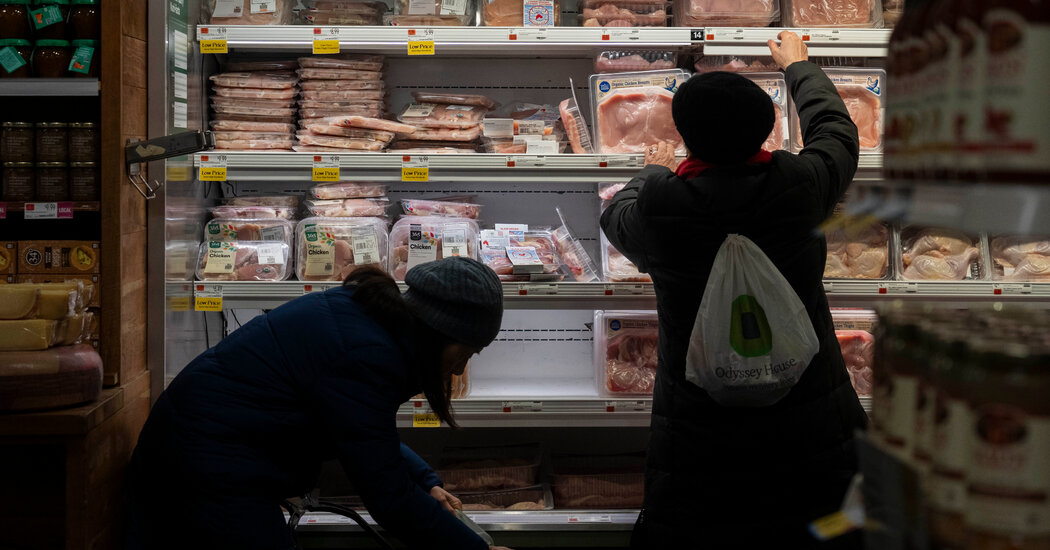American households struggled to cover some day-to-day expenses in 2023, including rent, and many remained glum about inflation even as price increases slowed.
That’s one of several takeaways from a new Federal Reserve report on the financial well-being of American households. The report suggested that American households remained in similar financial shape to 2022 — but its details also provided a split screen view of the U.S. economy.
On the one hand, households feel good about their job and wage growth prospects and are saving for retirement, evidence that the benefits of very low unemployment and rapid hiring are tangible. And about 72 percent of adults reported either doing OK or living comfortably financially, in line with 73 percent the year before.
But that optimistic share is down from 78 percent in 2021, when households had just benefited from repeated pandemic stimulus checks. And signs of financial stress tied to higher prices lingered, and in some cases intensified, just under the report’s surface.
Inflation cooled notably over the course of 2023, falling to 3.4 percent at the end of the year from 6.5 percent going into the year. Yet 65 percent of adults said that price changes had made their financial situation worse. People with lower income were much more likely to report that strain: Ninety-six percent of people making less than $25,000 said that their situations had been made worse.
Renters also reported increasing challenges in keeping up with their bills. The report showed that 19 percent of renters reported being behind on their rent at some point in the year, up two percentage points from 2022.
Interestingly, slightly fewer households were taking action — like switching to cheaper products or delaying big purchases — to defray their higher costs compared with 2022. Still, about 79 percent of households indicated that they had done something to offset climbing costs, suggesting that Americans have not yet broadly accepted high prices as an unavoidable reality of life.
The Fed’s annual checkup on household finances is particularly relevant this year. Consumer confidence has been depressed even though the job market is booming and inflation is cooling notably, a mystery that has befuddled analysts and bedeviled the White House.
Polls show that President Biden is suffering as Americans take a dim view of the economy under his administration. Donald J. Trump, the presumptive Republican nominee for November’s presidential election, has been hammering Mr. Biden’s economic record.
The report underscores that even though inflation is cooling, it remains a major concern for many Americans, one that may be a big enough worry to take the shine away from an economy that is growing quickly and adding jobs.
Part of the continued concern, many economists speculate, is because households pay more attention to price levels — which are sharply higher than they were as recently as 2020 — than to price changes, which is what statisticians mean when they talk about inflation. To use an example, a person may focus on the fact that his or her latte now costs $5 instead of $3, rather than the fact that it is no longer climbing in price as quickly as it was last year.
“When I talk to folks, they all tell me that they want interest rates to be lower and they also tell me that prices are too high,” Raphael Bostic, the president of the Federal Reserve Bank of Atlanta, said in an interview with reporters on Tuesday morning. “People remember where prices used to be, and they remember that they didn’t have to talk about inflation, and that was a very comfortable place.”
The Fed has raised interest rates to 5.3 percent from near zero as recently at 2022 in a bid to cool the economy and stamp out rapid price increases. While that, too, is painful for many households — placing home-buying further out of reach and making credit card balances painfully expensive — officials like Mr. Bostic emphasize that the policy is necessary.
“We’ve got to get inflation back to 2 percent as quickly as we can,” Mr. Bostic said, referring to the inflation rate that was roughly normal before the pandemic and that is the Fed’s goal.




